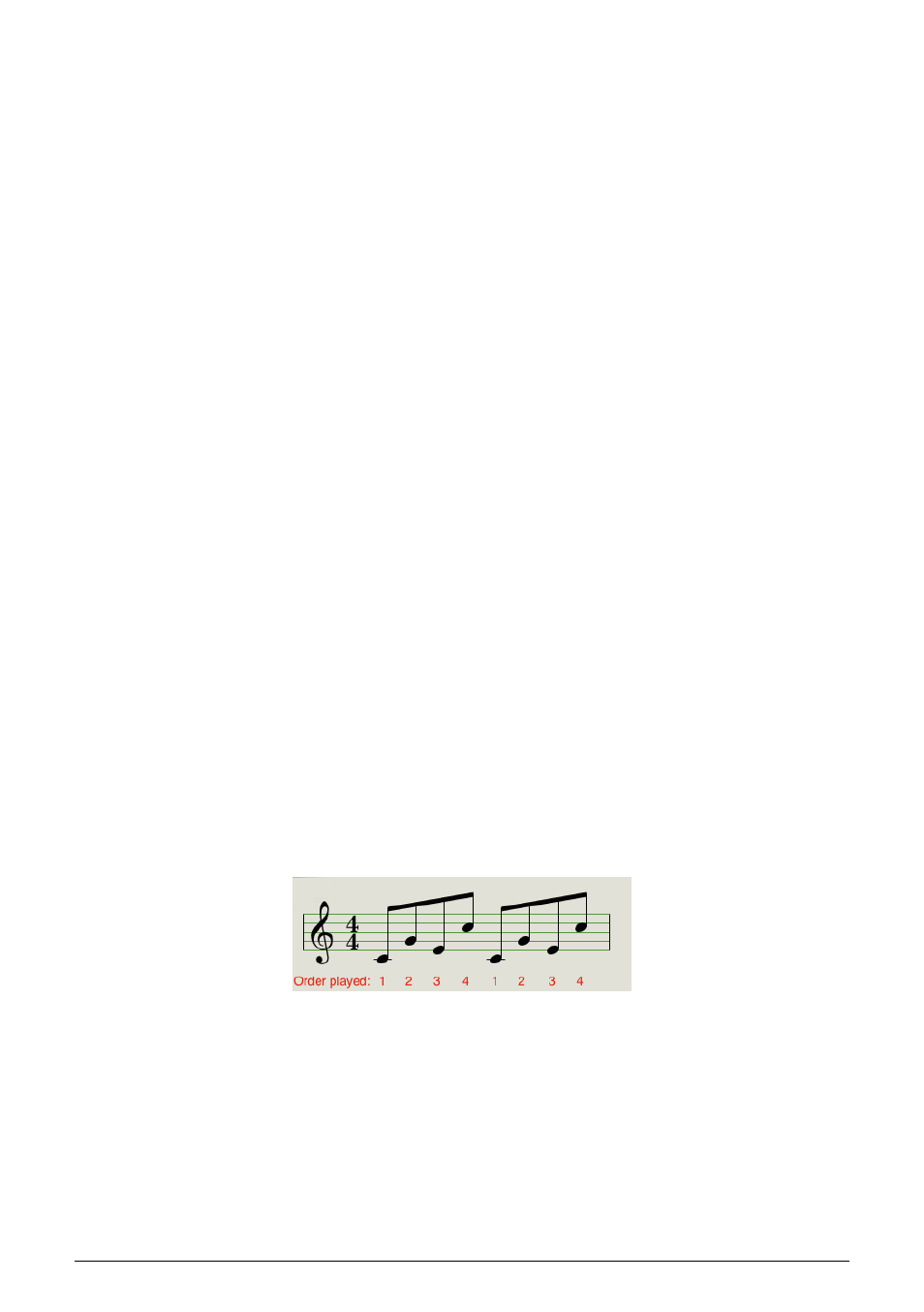Arp mode: pattern, Arp mode: order – Arturia KeyStep 37 MIDI Keyboard Controller and Sequencer User Manual
Page 61

5.3.8. Arp Mode: Pattern
Select Pattern to put the Arpeggiator in a semi-random mode. Keys you press in a legato
fashion on the keyboard are used by the Pattern algorithm to generate arpeggio patterns.
Each time you press a key the KeyStep 37 will generate a new pattern. It's a bit like having
a third sequencer.
This is a mode originally introduced in our MicroFreak synthesizer. It can be used to quickly
and spontaneously generate semi-random patterns that repeat. The "random but repeating"
nature combined with the fact that you can set the length of the randomized loop makes
this a very "musical" way of generating interesting ideas.
In this mode, every new note entered or released in the Arp will generate a random pattern
using the pressed/held notes and the current octave. You can set the length of the pattern in
steps by holding Rec and pressing keys 1-16. Note that you can create sequences up to 64
steps by holding down Rec and pressing multiple keys. For example, pressing Rec + 16 + 16
+ 8 + 2 would generate a random but repeating pattern of 42 steps (16 + 16 + 8 + 2 = 42) with
your chosen notes. Changing any note (or even pressing the same note again) or changing
the octave range (hold Shift and press the Oct- button or Oct+ button) instantly generates a
new looping pattern!
This may sound complex, but in practice it's actually a very quick and fun way of generating
patterns.
Note:
The arpeggio can be 'chordified'; turn the type knob to active chord mode.
When you find a particularly interesting pattern, press the Hold button and refrain from
touching the keyboard; the arpeggio will continue, and you'll have an extra hand to tweak
knobs. If you were to touch the keyboard again the Pattern algorithm would create a new
pattern, replacing your current pattern.
Deactivate Hold to clear the pattern.
5.3.9. Arp Mode: Order
With the Arp mode encoder set to
Order
the arpeggiator will play back the held notes in the
order they were played on the keyboard, from first to last.
In the example below the notes were played in this order: Middle C, G, E, and higher C. The
result is the following arpeggio:
Arturia - User Manual KeyStep 37 - The Arpeggiator
56
